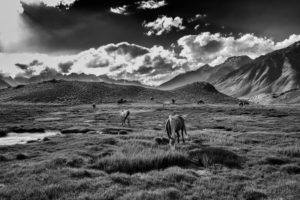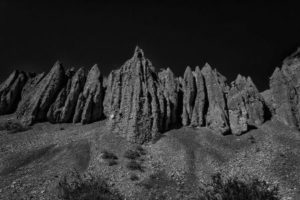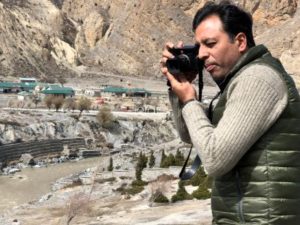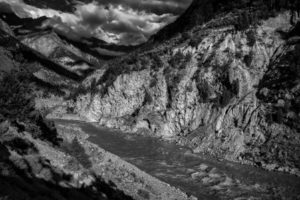Master of monochrome

Shot in a single, 10-day trip through the Spiti Valley, these images are a trifecta of the region’s wild beauty, a photographer’s control and the optics of the Leica M camera. All these 25 photographs, part of an exhibition, Light and Lines in the Middle Land: A Monochrome Journey Through the Spiti Valley, showcase tones and textures unique to monochrome landscape photography. Light and Lines is also a testament to the professional, digital photographic print. These 25 prints by fine art photographer Amit Verma are on display at the Convention Center Foyer, India Habitat Centre, New Delhi. The five-day exhibition ends today.
Verma has worked as a professional editorial photographer in Delhi for 20 years and has been the chief photographer of Forbes India since 2008. Saurabh Tankha had an email interaction with the ace lensman…
When was the first time you realised that your camera could act as a creative tool?
I first realised my camera can be a great tool to create something for myself when my dad gifted me one in 1986.
Tell us more about Light and Lines in the Middle Land: A Monochrome Journey Through The Spiti Valley.
In 2011, my mentor Rakesh Sahai showed me the works of legendary photographer Sebastião Salgado who shoots a lot in monochrome. It was so mesmerising to see the tones and contrast. That was the turning point for me. I found Leica M camera’s optics give me the best results so, in 2016, I got one and Spiti was the first place which came in my mind to go and try capture the vast landscapes. I generally don’t like to work on my personal images immediately after coming back from a trip. I give a gap of a few days or may be weeks so that when I see them again, there is a fresh perspective to select the images. I took my time to select and then started working on images to convert them into monochrome as camera raw files are always in colour. When I saw the possibility of an exhibition, then I gave my selection to Kamal Sahai, a writer and photographer, to curate this work and now that became a reality.
Why only landscapes?
I am doing editorial shoots and most of the time taking portraits of people. One fine day, I decided to take portraits of our very own Mother Earth. We talk so much these days about climate change and pollution but when I am shooting landscapes, I feel we still have a chance to save what all we have and our home or earth as an amazing capability to regenerate. I’ll keep taking portraits of her as long as I am shooting.
You once said you only see monochrome. When do you see colour through your lens?
Honestly, when I shoot for myself, I only see monotones. But, of course I see in colour while shooting for clients and for the stories my journalist friends. I want to keep shooting as long as I can.
Is there any other side of life you would want people to see through your lens tomorrow?
I want to keep shooting as long as I can so when I am not working with my camera then I am printing images from my archive as that is one aspect of this beautiful medium we tend to neglect. Every photographer should print for himself to leave a legacy behind as I believe that each one of us has individual style and work to preserve. I also teach photography as I love sharing whatever I know about it. Also, sharing keeps you on toes to refresh your knowledge to share with anyone, especially the young photographers who actually are very smart students.

I am doing a long-term project with my creative partner Melissa Alipalo, a US-based writer. We are building our collaborative called The Watersmeet. Our first big project together is based in a remote village in Nepal where we are trying to capture the lifestyle of people and the landscapes of the area. It will take some time to curate a book and an exhibition. Melissa also worked on this exhibition and wrote words for my pictures.





